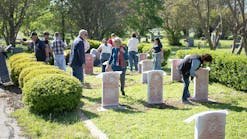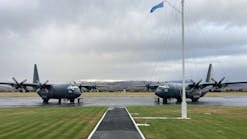Proposal for Aircraft Service Life Extensions: Why Extend Life Limit? (Part 1)
All aircraft manufacturers establish specific limits regarding the retirement and overhaul of their products. However, these limitations might not apply globally to every aircraft, since various countries have different operational conditions.
In this series of articles, I’ll explore why a service life extension may be the best option for certain aircraft and suggest methods and criteria for creating a safe life-extension framework. This series uses the Piper PA-44-180 SEMINOLE for its main example, focusing on its wing, wing carry-through and their attaching structure to evaluate and exhibit the aging process.
What is the life limit of an aircraft?
The impact of corrosion on structural integrity is a crucial concern for damage tolerance design and analysis. Once a Piper PA-44-180 SEMINOLE aircraft’s wing, wing carry-through and their attaching structure reach the limit of 14,663 flight hours, they’re typically retired as per manufacturer recommendations. This is known as the life limit.
However, operating conditions are not always stable and can’t be considered the same for every aircraft. This creates a need for the comprehensive inspection of each component before retiring an aircraft or extending its life limit.
There are aging aircraft around the globe that have been utilized beyond their original designed service life, often resulting from the budgetary constraint of airframe renewal. The project for elongating the service life proposes various techniques for investigating all the occurrences that can be found at the wing, wing carry-through and their attaching structure. These programs may help owners and operators estimate the remaining service life that extends past the original designed service life for a particular aircraft.
After an aircraft is given its designed service life during the design phase, it’s necessary to perform aircraft monitoring and maintenance, which can add constraints during the period of extended life. Aircraft also need to maintain appropriate certification for airworthiness to continue in service. Both of these reasons highlight the importance of service life extension programs.
When an aircraft is in operation for its entire designed life and nears the end, its reliability may fluctuate, rise or even collapse. As the operational life lengthens, effects of aging harm the structural and functional integrity of an older aircraft structure and its subsystems. This can occur even before the components reach the end of their design life and often results from exposure to their environment.
Various mechanisms play a role in the aging process of a PA-44-180 SEMINOLE aircraft’s wing, wing carry-through and their attaching structure, including:
- Exposure to normal atmosphere conditions or atmospheres with a higher degree of salinity, temperature, different chemical compounds, water/vapors, oils, fuel vapors or solutions, grease and/or UV radiation that can lead to brittleness, swelling, overheating, melting and more
- Vibration exposure and environments with negative acoustic properties that can cause fatigue, wear and fracture
- Airplane maintenance, storage or conservation procedures that don’t consider aging prevention
- Maintenance activities that may lead to damage to the airframe and other equipment components
The aging process of an aircraft structure is unavoidable, but it can be slowed by adopting the following approaches:
- Identifying critical areas where aging could have severe impacts
- Reviewing the aging process in a very old airplane to use as a reference
- Examining the present policy and maintenance practices in relation to the effects of aging
- Enhancing the preventative maintenance practices to prevent aging early on
What’s the benefit of extending an aircraft’s service life?
When an aircraft appears to be in outstanding flying condition, it may not be ideal to ground it just because one or two components have reached the end of their service life. In many cases, the aged components must be removed prior to reaching their limitations due to posing safety risks.
If the approach for extending service life explored in this series of articles is approved, it will support the conclusion that the life limits specified by the manufacturers should function more as a reference than a hard rule.
Instead, each operator could develop its own standards to determine whether to modify the service life limits in light of the actual physical condition of the equipment
Why the Piper PA-44-180 SEMINOLE?
This series serves as a reference for evaluating the aging of any aircraft structure, especially the wing, in any nation, with the requirement to increase or decrease service life. However, the example that this series and proposed program uses is the Piper SEMINOLE aircraft, with future testing, evaluation and synthesis of findings to be completed in Jordan.
The Piper PA-44-180 SEMINOLE is a product of the USA. The prototype of this aircraft had its maiden flight in 1976. Serial aircraft have been produced since 1978 until to date.
Aircraft of this type are used in several countries, including the USA and Jordan, for flight schools (multi-engine flight training) and personal use. More than 1,000 aircraft of this type have been produced.
What will the proposed service life extension program involve?
The current designed service life of the wing, wing carry-through, and attaching structure for this aircraft is 14,663 flight hours. The proposed program assesses whether it’s feasible to extend the service life and, if so, for how long.
The program is designed to use NDT methods, modern numerical structure analysis and simulation analysis as a foundation for determining the possibility of a service life extension. The program precisely defines and quotes all elements and methods that must be performed, which will be explored in more detail in future installments in this series.
The circumstances of the aircraft's storage will also be taken into account as part of the service life extension program. For example, the proposed experiment will consider the conditions of the hangars where aircraft are kept, as they add important variables to the deterioration process.
This is because warm and dry hangar conditions have favorable outcomes compared to aircraft being kept outside. Aircraft standing outside hangars during their no-flight hours are exposed to dry and wet conditions, potential salt in the air, acid rain, UV radiation, windstorms and more. Additionally, hangars that are consistently cold or wet can have similar adverse effects that speed deterioration.
In the next installment of this series, I’ll dive deeper into factors that impact the deterioration of an aircraft and its components. This will include common sources of aircraft aging.






